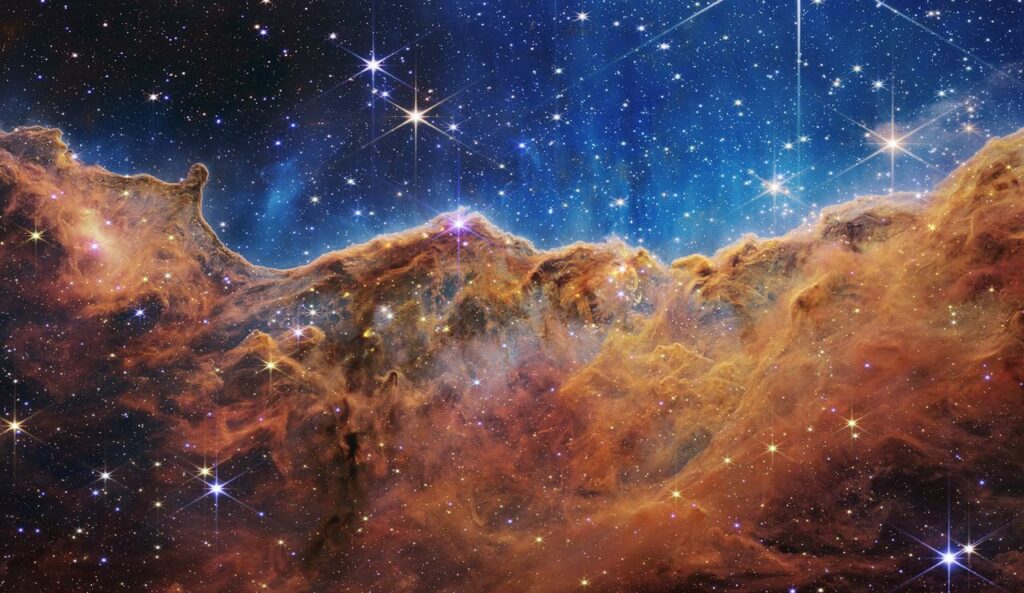This image was taken by the James Webb Space Telescope(JWST). It shows an interesting phenomena happening in the Carina nebula. Called the Cosmic Cliffs, the region is actually the edge of a gigantic, gaseous cavity within NGC 3324 galaxy, roughly 7,600 light-years away. The cavernous area has been carved from the nebula by the intense ultraviolet radiation and stellar winds from extremely massive, hot, young stars located in the center of the bubble, above the area shown in this image. This image, captured in the near-infrared spectrum by the NIRCam. NIRCam instrument on the JWST unveils numerous stars and distant galaxies that were previously hidden. The clarity and high sensitivity of NIRCam make these discoveries possible. There are several prominent features of this image:
- The “steam” that appears to rise from the celestial “mountains” is hot, ionized gas and hot dust streaming away from the nebula due to intense, ultraviolet radiation
- Dramatic pillars rise above the glowing wall of gas, resisting the blistering ultraviolet radiation from the young stars.It also
- Bubbles and cavities are being blown by the intense radiation and stellar winds of newborn stars.
- A “blow-out” erupts at the top-center of the ridge, spewing gas and dust into the interstellar medium
Overall this image shows various fluid phenomena occurring and the technical complexity of the technology and imagery, in addition to the various fluid phenomena occurring all at once, over a distance of light years, makes it in my opinion the “Best of Web”.
Credit: NASA
https://images.nasa.gov/details/carina_nebula

2 Comments. Leave new
First Prize
I love anything related to outer space and flow visualization of giant interstellar bodies like this are really special. You did a great job explaining and breaking up the information on the image. I think that this type of photography where you use many differnt ways to actually capture something (and something this far and this massive) is something that has always intrigued me and I would love to find ways to be able to capture insane pictures like this someday.
First place. Flow visualization for astronomical purposes are some of my favorite pictures. As mentioned in the caption, much of what we see is not visible light, so by using imaging that captures IR light, it shows us a whole world of structures which can teach us about formation in the universe.